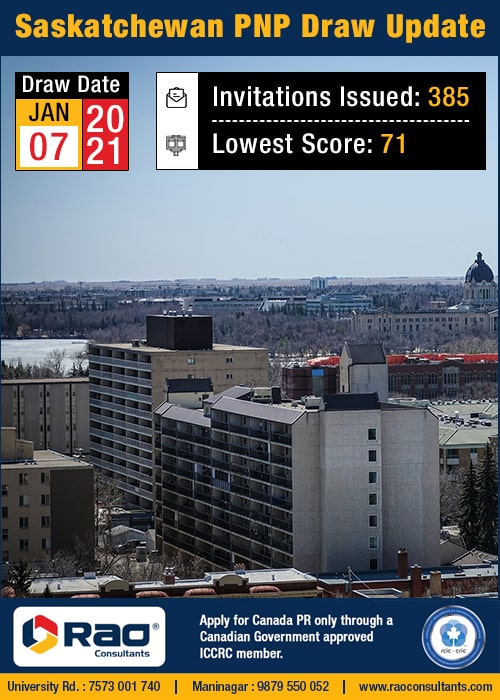The island of New Zealand was first spotted by Dutch explorer Abel Tasman in 1642. Before that Polynesians has already settled the islands as early as 1250 and 1300. The country essentially has two major land masses the North Island and the South Island. There are also over 600 smaller islands around these. Some of these islands are hundreds of miles from the two major islands. The country was annexed by the British in 1840 and later gain dominion 1907 although full independence came only in 1947.
The distinctive Maori culture of the islands was something developed by the Polynesians who migrated to these lands as far back as the 1200s. The country, because of its sheer remoteness, was one of the last inhabitable lands on earth to be populated. This long period of solitude the land enjoyed created a unique ecosystem and biodiversity specific to the land. The country is spectacularly bountiful in terms of natural beauty.
A highly developed nation, New Zealand ranks very highly in terms of essentials like health, education, economic freedom and quality of life. The country has grown from a largely agrarian society to a free market economy and has made some amazing strides in that direction. The country, despite its obvious isolation from international affairs, has, since its independence, been active in international affairs. The country has a parliamentary democracy and is a constitutional monarchy. The parliamentary election in New Zealand must be three years and no later after the last election. Interestingly, between March 2005 and August 2006, all the highest positions in the New Zealand government were held by women.
New Zealand and Australia have a close political contact and over 650,000 New Zealanders live in Australia, which is about 15% of the nation’s population. New Zealand is over 1600 kilometers long and has a maximum width of 400 kilometers. The largest island in New Zealand is the South Island. Most of the land in the country, about two-thirds, is economically useful, the rest is mountainous. The country also has a number of forested regions which house a variety of interesting bird species that have thrived there in the absence of natural predators.
New Zealand is at the center of what is known as the water hemisphere and is essentially a collections of islands. The two largest islands, North Island and South Island make up the major portion of the country while there are 600 other smaller islands scattered around them. The country has a huge amount of marine resources simply because of these islands that are located hundreds of kilometers from the two main islands. In fact the marine area of the country covers more than 15 times its land area.
The South Island is the biggest landmass in New Zealand and is also the 12th largest island in the world. The Southern Alps, a long mountain range, divide the South island along its length and has a number of peaks over 3000 meters, the tallest of which is Mount Cook at 3745 meters. The country basically straddles the boundary between the Pacific and Indo-Australian tectonic plates.
The country’s isolation has led to the creation of a number of unique creatures, plants and microorganisms. Almost 82% of the country’s indigenous vascular plants are endemic to the region. Before humans arrived on the island 80% of the land was covered with forests, now only 23% of the land is forested. The lack of natural predators in these forests allowed for birds to make these islands their homes giving rise to some truly unique avian species’. Birds like Kiwi, kakapo, and weka evolved to be flightless birds unique to this region. The waters around the island are rife with life and half of the world cetaceans are found in this regions.
The country has a highly temperate weather and is nicely protected from extremes. Summer temperatures are usually around the mid-twenties while winter temperatures hover around the mid-teens in most urban areas. The country, because of its highly temperate climate has also become a choice tourist destination. Because of the country’s positioning and length, there can be sudden changes in the geography of the region. Within an hour’s drive one can see about four seasons as pressure pockets increase and decrease.
The warmest months of the year are December, January and February which is the summer season. The temperature during these months ranges between 20 and 30 degrees. The coldest months of the year are June, July and August, where the average maximum temperature is 10-15 degrees. The daylight in summer months, because of daylight savings time, can last till 9 pm while in winter it can last till5 pm. The west coast of South Island finds itself facing the most number of wet days, Wellington is the wettest city in the country. The southern and south-western regions of the South Island have a cooler and cloudier climate.
The majority of New Zealanders live in North Island. Auckland, in the North Island is the biggest cities in the country and the financial capital. The country receives plenty of sunshine through the year although snow is common in the eastern and southern parts of the South Island as well as the mountainous areas. The North Island is the vastly more developed region of the country and there is also a lot of geothermal activity here. This has given rise to a large geothermal power industry which supplies a substantial portion to the nation’s power needs.
New Zealand is home to some of the prettiest and urban cities in the world. There are coastal cities, cities with volcanoes, cities that have a geothermal park as its city park, there is no dearth of interesting cities in New Zealand. Auckland is by far the largest city in the country, with over 1.5 million residents. Funnily, the city has more people living there than the entire South Island. Not only is it a beautiful place to stay, it also has some of the most amazing parks and entertainment scene in the country.
Wellington is the capital of New Zealand and has a population of 400,000. The city is on a coast, has wineries all around it as well as mountain and is definitely one of the more picturesque cities in the world. There are a lot of other cities that offer good employment opportunities and quality of life in New Zealand, a few of them are.
- Christchurch
- Hamilton
- Tauranga
- Napier
- Dunedin
- Nelson
- Rotorua
English the nation’s de facto language and is used for all political announcements and legal proceedings. The te re Maori language is also spoken a lot in the country. A lot of immigrant languages are also spoken in the country due to a large influx of immigrants over the years. They are:
- Samoan
- Hindi
- Mandarin
- French
- Yue
- Japanese
New Zealand has a strong economy and a high GDP and its currency is the New Zealand dollar, the tenth most traded currency in the world. The country was ranked 13th in the Human Development Index, which is a fairly high position on the list and third on the list of the Index of Economic Freedom. New Zealand had a history of exporting products like flax, gold and kauri gum among other things. Meat and dairy exports also make up a huge part of the exports of the country.
New Zealand’s largest portion of the GDP comes from international trade especially in agricultural products. Exports, in fact, account for up to 24% of its output. Food products make up 55% of these. Nations that it exports mostly to are Australia, USA, Japan, China, and the UK. The service sector has emerged to be the biggest sector in the country accounting for a major chunk of the nation’s GDP. It is followed by manufacturing, construction, farming and raw material extraction.
The country has a generally well-developed infrastructure which ensures that businesses do not suffer. Over 94,000 kilometers of roads, elaborate rail network, strong air travel connections, and a number of sea ports ensure that the country has a robust transport network. The country also has some of the lowest mobile prices in the OECD and the telecommunications network too is very well developed.
The country’s economy is vastly supported by some large scale manufacturing industries in the form of food processing, metal fabrication, wood and paper products, aluminum, etc. Tourism also plays a major role in the economy of the country and contributes almost 13 billion dollars to the economy and supports some 7.5% of the total workforce. Dairy farming is one of the biggest livestock activities in the country and also a big export, so is meat, wool, fruit and fishing.
The country has also invested heavily in renewable energy and it accounts for more than 40% of the nation’s gross energy supply. The country was also ranked number 1 on Transparency International’s Corruption Perceptions Index in 2017. This makes it the most corruption free country in the world. The Reserve Bank of New Zealand is the central bank of the nation. The country has a variety of trade agreements with a number of nations in an effort to diversify its markets and push New Zealand products abroad.
The Overseas Investment Office regulates all the overseas investment that happens in New Zealand. The country encourages foreign investment and the figures for the same have been on the rise. New Zealand’s economy has been on the rise over the years and is definitely one of the most competitive and rapidly growing ones in the world.
New Zealand is one of the most culturally rich countries with a heritage that still remains alive in its people and cities. There are a number of things one can do in New Zealand and the country has a host of natural as well as manmade attractions that attract hundreds of thousands of tourists all year round. New Zealand has become a sort of de facto adventure sport destination for tourists around the world. It provides bungee jumping, sky diving, caving and canyoning experience, most of which you may never even have heard of before.
The country, being an island, has a massive coastline, most of which can be navigated and used for water based activities. Sailing, surfing, fishing and diving are second nature to most New Zealanders. Be it windsurfing, kitesurfing or even rafting, New Zealand provides the water enthusiast a huge range of activities to indulge in.
New Zealand has some amazing scenery and this can best be explored by hiking or walking. The variety of landscapes in the country make walking and hiking an experience full of discovery. The country’s landscape is also incredibly famous after having been a central location for the Lord of the Rings movie series. The hobbit village called Shire in the movie was especially created and maintained even today and has become a major tourist destination for the country.
Maori art plays a huge role in the country and many artists have made a craft of using these cultural motifs in their work. If you are in New Zealand it would be impossible to miss the haka, or the traditional Maori dance. This dance, widely considered to be a war dance and ritual challenge, is much more than that and, in fact, embodies the culture and tradition of New Zealand as a whole.
New Zealand music has also gained a lot of variety from blues, jazz, rock and roll to hip hop there is no dearth of good music in the country. Small gigs are a regular occurrence in most urban areas and are a great way to spend the evening with some food, drinks and good music. A number of musicians from New Zealand have gone on to make it big on the world stage.
Sports play a big role in the lives of New Zealanders. The most popular sports in the country are rugby, basketball, cricket, netball, and football, among others. The All Blacks, the national rugby team of New Zealand, have the best win record of any other rugby team in the world. The country also has one of the most unique cuisines in the world. The Maori cuisine usually contain sweet potato, fern root, birds, fish and other ingredients which are cooked in earth ovens. Geothermal areas provided steam to boil much of their food. There is also the Pakeha cuisine of British settlers which is similar to the British cuisine. One can travel to the Abel Tasman National Park or the Tongariro National park or one of the many others. Geothermal springs, volcanoes, mountains and forests make New Zealand a great place to travel and live in.



